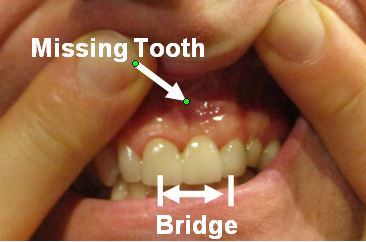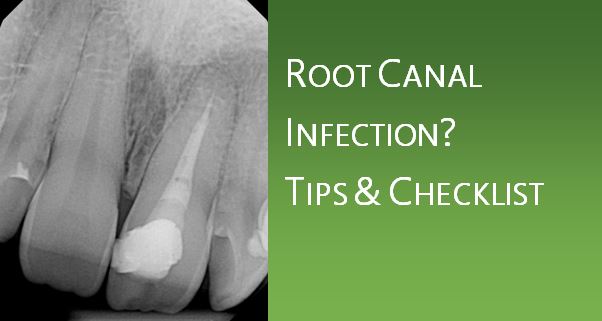What symptoms can a root canal infection cause? What should one do if a root canal is infected? Can the tooth be saved? This article summarizes our family’s experience with hidden root canal infections. Treatment options, tips, and a checklist are included. Below is an outline of the content of the article for those who like to skip around.
Symptoms of Root Canal Infection
Can a Root Canal Be Performed Without Infection?
Implant, Partial, or Bridge after Extraction?
Symptoms of Root Canal Infection
Root canal infections can manifest differently in different people. Infections can hide in the 3 miles of dentinal tubules and accessory canals. The immune system will fight bacteria and viruses that try to spread beyond the tooth. The immune system, organ function, genetics, methylation, and digestive health all play a role in how well the body can fight off root canal infections.
Some people live full, long, healthy lives with infected root canals. If there aren’t lots of other chronic infections or toxins, the immune system might be able to deal with the infection just fine. However, symptoms may arise years later as the body accumulates more toxins, viruses, parasites, and other infections.
Symptoms from a root canal infection may not be readily traceable back to the teeth. What? Yes- back pain, sinus infections, ringing in the ears, shoulder pain, thyroid and adrenal problems, heart problems, liver and kidney issues, and more can all be caused by a root canal infection [3].
A great example is my husband Manuel. He lived with an infected root canal for over 20 years. He had a healthy, full life, including working full time, running marathons, and being a father. The dentist and I had been telling him for years that the tooth must be infected and had to go. Finally, he got Lyme disease, his health declined, and he decided to have the tooth pulled. Once he finally had it extracted, he couldn’t believe how much better his back felt. He would’ve never believed that his back pain could stem from the infected root canal tooth.
How does one know if symptoms are coming from an infected root canal? This is the million dollar question. Currently, we have the following clues that can be pieced together:
- The Tooth Organ Chart – Look up teeth with root canals on the tooth organ chart. Check for un-obvious symptoms that might be consistent with root canal teeth.
- Thermal Imaging – In case one has access to a thermal imager, this can provide another clue. Look for hot spots around root canal teeth.
- Self Muscle Testing – The videos below demonstrate how our family muscle tests to figure out if a tooth might be infected. If a root canal tooth is testing very weak compared to the baseline test of a strong tooth, then this is a strong indicator that bothersome symptoms are coming from the root canal tooth. If the tooth is testing the same as baseline or stronger, that indicates that the root canal is not causing the bothersome symptoms at this point in time. However, it may still be infected and may need to be dealt with later.
Muscle testing takes practice. Check out the Intro video first if you have never seen these techniques before.
The dental tab on this website has more details about our experience and symptoms of hidden dental infections.
Can a Root Canal be Performed Without Infection?
Is it possible for a dentist to perform a root canal without resulting in a chronic infection? It is impossible to sterilize and seal a root canal tooth [1,2,3]. There are 3 miles of dentinal tubules and accessory canals that are in each tooth. This means there are many places for bacteria and viruses to hide. No wonder it is so difficult to eradicate the infection when performing a root canal!
What about antibiotics? Antibiotics can’t reach into those 3 miles of tubules and accessory canals, because there is no direct blood flow. They will also kill beneficial bacteria in the digestive tract, which impairs the immune system’s ability to fight. Taking antibiotics during or after a root canal will not ensure that no infection exists.
Personally, I assume that all root canals are infected. The question is: Should something be done? It depends on the situation. If there are no symptoms and the person is healthy and living a full life, then why do anything? Rock on.
If there are symptoms, then I would consider doing something. Remember the Tooth Organ Chart – the symptoms may not be obviously related to the tooth!
These pictures of root canal infections are fascinating.
Tooth Extraction Checklist
What if one wants to get rid of a root canal infection? The only chance to remove the infection is to remove the tooth. There are simply too many places for infection to hide.
Even if the tooth is extracted, there is still no guarantee that one is infection-free. Bone needs to re-grow where the tooth and roots were previously. If the periodontal membrane of the tooth isn’t removed, it is hard for bone to re-grow. Platelet Rich Fibrin (PRF) is one technique to help accelerate bone growth.
Even if the membrane is removed, sometimes a lingering infection can still result. Ozone during the extraction and Post-op ozone injections into the extracted tooth site are essential.
Finding an awesome practitioner, getting ready for the extraction, and post-op care are all important. Rather than go into a long list of details, I created a summary Tooth Extraction Checklist.
Implant, Partial, or Bridge After Extraction?
After extraction, is an implant, partial, or bridge the best choice? Below I summarize the trade-offs associated with each option. The sections below go into each option in more detail. My personal opinion about these is offered at the end.
| Advantages | Disadvantages | |
| Bridge | ·Relatively secure in mouth | ·Adjacent teeth are filed and compromised |
| Partial | ·Can be taken out & cleaned ·Doesn’t compromise other teeth | ·Not very secure in the mouth |
| Implant | ·Secure in mouth ·Doesn’t compromise the teeth around it | ·Is likely still harboring infection ·Biocompatibility of the material |
Bridge
A bridge, or fake tooth, can be built across the missing tooth area. The problem is that the two teeth surrounding the missing tooth have to be filed down in order to cement the fake tooth to them. This compromises the two teeth adjacent to the bridge.
The bridge is permanent, and often feels pretty structurally secure. Aesthetically, it can be difficult to see a bridge. Sometimes there is a darker area in the gums above the bridge, which can give away the bridge location.

One caveat to a bridge is that it should not be done across the midline. This means Tooth # 8, 9, 24, 25. Why? This will fuse together two cranial bones that were not intended to be fused together. Some people can live with two cranial bones fused. For others, restriction of cranial motion across the midline can create worse symptoms than the original dental infection itself [4].
The picture above is a bridge across Tooth #9.This was a big mistake we made with my husband! Hindsight is 20/20. For now, he is able to live with the bridge and appointments with an osteopath. Someday this may need to be fixed.
Partial
A partial is a fake tooth that can be removed. It is kind of like a retainer with a tooth on it. The disadvantage is that it sometimes feels insecure in the mouth. The advantage is that it can be removed, cleaned, and replaced. It does not compromise the surrounding teeth.
Some people are also doing an ALF with a tooth on it. The ALF is specially designed to support cranial structure and function. This seems like a decent option if an ALF was needed to help widen the upper or lower jawbones anyway. However, it is a lot more expensive than a partial.
Implant
There are two potential issues with implants. The first is biocompatibility. Although some dentists are now using zirconium, I also question if there are other toxicity issues with zirconium that we have yet to discover.
The second issue with implants is getting an infection-free implant. There aren’t many studies on implant infections. This Peri-Implant Infection article is one of the only ones out there.
I also believe, similar to root canals, that implant infections can be ‘hidden.’ The infections may not be obviously related to the mouth. The symptoms are often mis-diagnosed as some other problem.
Suffice it to say that I have yet to see an implant that is not infected. Why? Where is the infection hiding? I don’t know exactly. My theory is that bone has to grow around the implant. If it doesn’t, there can be pockets between the bone and the screw, or in the screw grooves, where bacteria and infections can hide.
It seems possible to me that with post-op ozone injections, it should be possible to have an infection-free implant. The problem is getting ozone all around the whole area. Now that the implant tooth is there, it seems a tap would have to be drilled from each side. Anyway, this is just a musing, since no practitioners are doing post-op ozone injections on implants — at least not that I’m aware of.
Personally, I wouldn’t get an implant after extraction, because of the risk of continued infection. It’s frustrating to spend a decent amount of time and money, only to be back at the starting line.
My Opinion
Personally, I would get a partial. If one really wants a bridge, OK, but don’t do it on #8, #9, #24, or #25. I would avoid implants because of their potential for continued, chronic, hidden infection. I would deal with the cleaning issues of a partial, and the fact that the partial wouldn’t be as secure in the mouth.
FAQ
Q: Can you recommend a practitioner for root canal extraction?
A: I can only recommend Dr. Robert Jarvis, who is currently practicing at Marin Wellness in California.
References
[1] Kulacz, Robert DDS, “The Toxic Tooth: How a root canal could be making you sick,” 2014.
[2] Meinig, George, “Root Canal Cover Up,” 2008.
[3] Yu, Simon MD, “Accidental Cure,” 2010.
[4] Dr. Gerald H. Smith, “Dental Bridgework May Be the Source of Your Patients’ Headaches, Neckaches and Facial Pain.”
Was this information useful? If so, please consider donating to keep this site alive.
Last Updated:


